Why child rights mainstreaming is critical to realizing child rights
In today’s world, where child rights face widespread backlash, increasing violations, and multiple crises such as environmental disasters, migration, armed conflicts, and inequality, there is an urgent need to advocate for the comprehensive implementation of the United Nations Convention on the Rights of the Child (UNCRC). It is crucial to ensure that a child rights approach is systematically applied at all levels, including within the UN system. This approach, known as child rights mainstreaming, emphasizes the core element of child participation, as highlighted by the UN Committee on the Rights of the Child (CRC Committee).

Despite constituting over a quarter of the global population, children are the only group of rights-holders with a specific human rights treaty but without a dedicated UN strategy to ensure political commitment, policy coherence, and coordinated action across the UN system. Without integrating child rights into the work of all UN entities across the pillars of human rights, development, and peace and security, States will not receive the necessary technical assistance or feel sufficient pressure to fully implement the UNCRC. Consequently, some children, particularly the most marginalized, and certain children’s rights, often the most controversial, may be left behind.
The lack of prioritization for an integrated child rights approach within the UN system has led to the systematic exclusion of children from key decision-making processes. This perpetuates the notion that it is acceptable to restrict children’s right to be heard and participate as civil society actors due to a perceived lack of political will. Unlike the women’s rights movement, the children’s rights movement has not been forceful and coordinated enough in advocating for global acceptance of child rights mainstreaming as a strategy for empowering children.
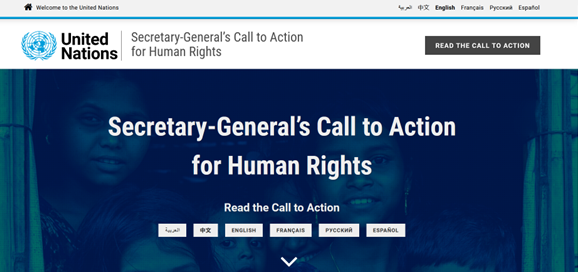
Recent years have nonetheless brought opportunities to remedy this situation. In September 2021, the UN Secretary General (SG) presented his report on Our Common Agenda: Responding to Current and Future Challenges. Together with his Call to Action for Human Rights, the Common Agenda outlines the SG’s vision and proposals for strengthening the UN system. While the Secretary-General has primarily mentioned children in relation to future generations, his vision revolves around placing people at the centre of all UN activities. Building on this momentum and recognizing the significance of child participation, as previously acknowledged in the UN guidance note on civic space, we seized the opportunity presented by the Common Agenda to elevate the global voice of the child rights movement, extending beyond Geneva.
Now is the time for the child rights movement to unite and advocate for child rights mainstreaming on a broader scale, ensuring that children’s voices are heard, and their rights are integrated into all aspects of the work of the UN system. By seizing these opportunities and working together, we can drive real change and empower children worldwide.
What we did to address this crucial gap
An historical engagement which gained unprecedented momentum in 2021
Since 2004, we have tirelessly championed child rights mainstreaming. In 2020, we actively contributed to the High-level panel on child rights mainstreaming of the Human Rights Council. But it was in 2021 that we reached a significant milestone. In September 2021, we prepared a strong position paper, demanding that the UN prioritize child rights in all its actions. Endorsed by 100 organisations, including renowned human rights NGOs and global child rights advocates, our paper had a resounding impact. To further amplify our message, we co-organized an event on child rights mainstreaming during the 76th session of the UN General Assembly in October 2021, together with Amnesty International. Supported by the CRC Committee, the European Union, and Uruguay, this event aimed to raise awareness and secure political support.

As a result, just four weeks after receiving our position paper, the UN Secretary-General took an unprecedented decision. He committed to developing a Guidance Note on child rights mainstreaming as part of his Call to Action for Human Rights. The Secretary-General mandated an inter-agency group composed of four key UN entities, including the UN Office of the High Commissioner for Human Rights (OHCHR), UNICEF, and the two Special Representatives focused on child rights to work together, in consultation with civil society and children, as we recommended, to develop the Guidance Note. This momentous step marked the first time the UN as a system assesses how it integrates child rights into its work.
Providing space for civil society and children to influence the Secretary-General Guidance Note
In 2022, we harnessed our influential Network to drive global engagement and support meaningful consultations with civil society and children worldwide in the development of the Guidance Note. Our goal was to ensure that this guidance truly reflects the lived experiences and views of children. Working closely with the OHCHR, we supported the organisation of nine online regional consultations in multiple languages, giving civil society organisations (CSOs) and children a platform to contribute directly to the drafting of the Guidance Note. These consultations were held in Africa, Asia and the Pacific, Europe, and Latin America, and included specific consultations with children in different regions. To facilitate participation, we collaborated with key members and partners in each region, ensuring broad representation. We also developed online surveys in English, French, and Spanish, enabling civil society actors to share their inputs. In collaboration with our Children’s Advisory Team, we created a dedicated survey tailored to children. Through these efforts, over 450 children aged 7-17 and 300 civil society actors seized the opportunity to shape the Guidance Note.
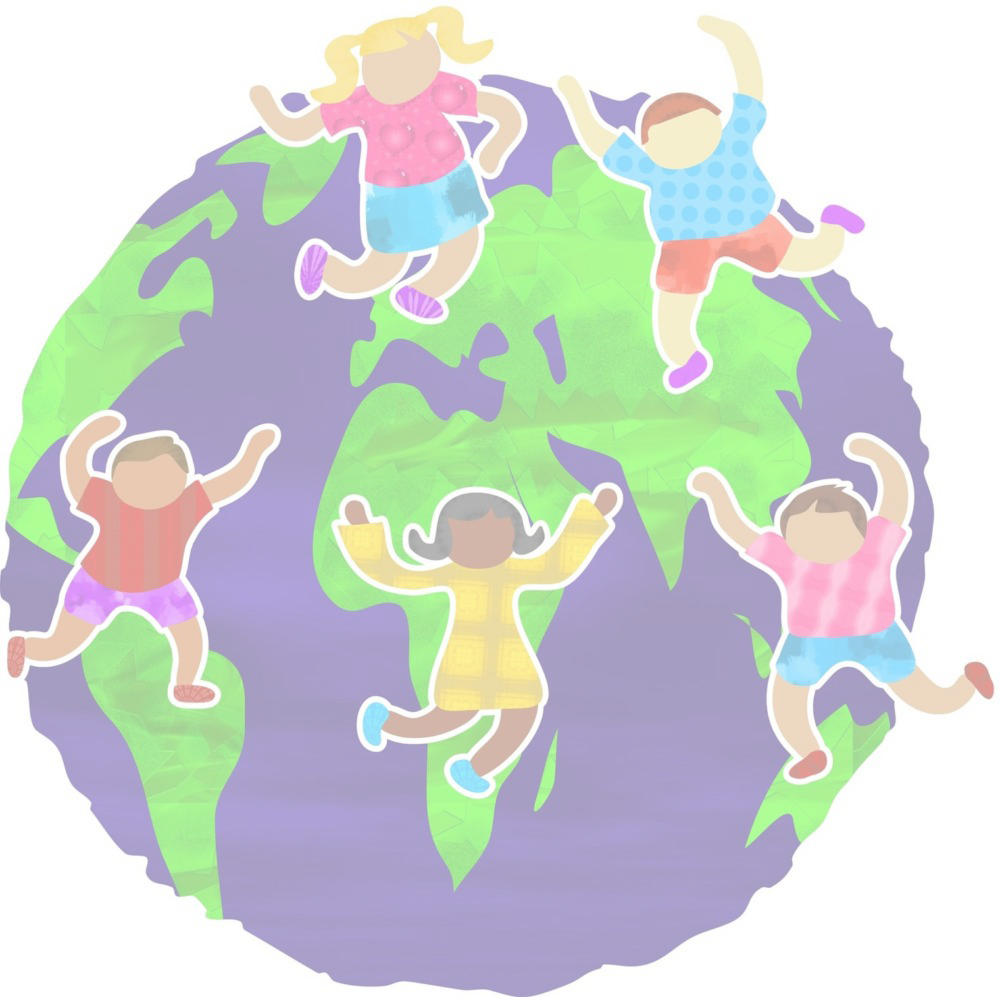
Throughout the process, we also provided ongoing technical guidance to the UN core group, assisting in the development of survey questionnaires, and supporting the consultations. We also developed child-friendly materials, including a child-friendly version of our position paper, in collaboration with our Children’s Advisory Team. These resources empowered children, even those with limited knowledge of the UN, to learn about their rights, understand the UN’s work, and express their views on how the UN can better integrate child rights in its work. Children took an active role during the consultations, moderating discussions and making their voices heard. By engaging with children and civil society through these consultations, we have worked at ensuring that the Secretary-General Guidance Note on child rights mainstreaming reflects the diverse perspectives and needs of those it seeks to protect.
Common strategizing within the Network: speaking with one powerful voice
We didn’t just influence the process. We also took active steps to mobilize, engage, and strategize within our Network to drive child rights mainstreaming forward through various channels. At our June 2022 General Assembly, we facilitated a groundbreaking multi-stakeholders’ discussion. This allowed our Network members to express their expectations to the OHCHR and UNICEF vis-à-vis child rights mainstreaming and the CRC Committee to actively participate in the process. This discussion served as a foundation for our strategic planning, where we collaborated with our members/observers and child advisors to develop a comprehensive “Network Advocacy Plan: Advancing Child Rights Mainstreaming across the UN system 2022-2025.” This three-year plan seeks to empower our Network to act collectively and send impactful messages to the UN and Member States at all levels. It has also facilitated joint advocacy efforts leading up to the 2024 Summit of the Future, to be convened by the UN Secretary-General to implement Our Common Agenda.
Through capacity-building initiatives, we empowered our members and observers to use other platforms to advance child rights mainstreaming. In January, we conducted a webinar to share best practices on engaging in Voluntary National Reviews, which facilitate the exchange of experiences and lessons learned to accelerate the implementation of the Sustainable Development Goals. This webinar provided our members and observers with valuable guidance on strengthening multi-stakeholder coordination at the national level to mainstream child rights into the development agenda. Additionally, in partnership with our member Save the Children, we developed and launched in July a practitioners’ tool on advancing child rights mainstreaming through the Voluntary National Reviews, as part of the ‘How To’ child rights series.
Bringing child rights mainstreaming at the Secretary-General Summit of the Future for systemic, lasting changes
Recognizing the growing support from States to the UN Secretary General’s Our Common Agenda, it became clear that the forthcoming Secretary-General’s Summit of the Future presented a crucial advocacy opportunity to advance child rights mainstreaming within the UN. The Summit’s outcome, the Pact of the Future, is expected to make recommendations on a range of issues that directly or indirectly impact children’s rights, including future generations, youth engagement, public information, the digital space, and economic growth. However, so far, discussions around the Summit have either completely excluded children’s rights or limited them to the focus on future generations. Determined to change this, we, together with our Children’s Advisory Team, began advocating for the inclusion of children in the Summit and the preceding discussions.
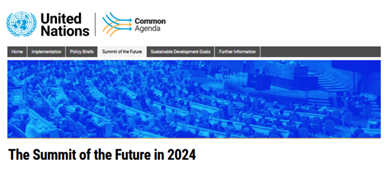
In March 2022, we supported our former child advisor from Bangladesh to participate in the first consultation of the UN General Assembly on the implementation of the Secretary-General’s Our Common Agenda report. To influence the UN General Assembly resolutions on the Summit of the Future, we directly engaged with the President-elect of the UN General Assembly, the co-facilitators (first New Zealand and Oman, then Germany and Namibia), and conducted targeted advocacy with other States, particularly those championing children’s rights in Geneva (such as the EU, Slovenia, Belgium, and Luxembourg). We also collaborated with the co-facilitators responsible for establishing the Youth office (Egypt and Guyana), as well as Sweden, one of the facilitators of the Global Digital Compact. Leveraging our 2021 position paper, we submitted a proposal in August to the High-level Advisory Board established by the Secretary-General to prepare for the Summit of the Future. Further, we joined the “Coalition for the UN We Need”, the main civil society coalition coordinating advocacy around the Summit. By actively participating in these discussions, which primarily focused on youth and adults, we ensured that child rights were not forgotten.
We also used other advocacy entry points to advance the child rights mainstreaming agenda, such as the OHCHR’s care agenda, which will lead to the 2024 Annual full-day meeting on the rights of the child and the related resolution by the Human Rights Council on inclusive social protection.
Through these concerted efforts, we are seizing every opportunity to position child rights at the forefront of the Summit of the Future and advocate for their integration into global discussions and decision-making processes.
What difference did this make
The impact of the Secretary-General Guidance Note initiative is yet to be fully realized, as the guidance is expected to be published in 2023. However, early indications suggest that it will address key recommendations from civil society and children, emphasizing child participation as a core principle for integrating a child rights approach across the UN. The inclusive and responsive process, with consultations enabled by our Network, aims to ensure a credible and impactful Guidance Note at all levels of the UN. The wide Network mobilization and coordination around this strategic agenda also testifies to the strong convening and persuasive power of our organisation as a network.

What key lessons have been learned
The Guidance Note marks the beginning of a longer process that demands ongoing engagement from multiple stakeholders. The early and interim outcomes demonstrate the significant impact of wide and coordinated civil society advocacy, using various avenues of influence, in shaping the UN’s agenda and influencing both UN leadership and Member States. It also shows that coordination between advocacy in Geneva and New York is both possible and important, and should be strengthened at all levels, amongst and within civil society, States and UN agencies. This work has also underscored the imperative to bolster the capacity of CSOs to integrate children’s rights into their work and empower them to leverage relevant opportunities for advancing child rights mainstreaming, building on the process of the Guidance Note.



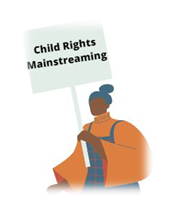



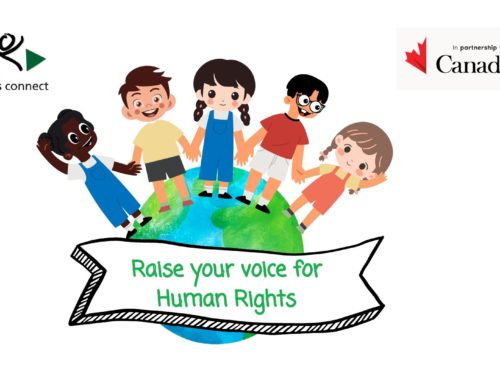



Leave A Comment